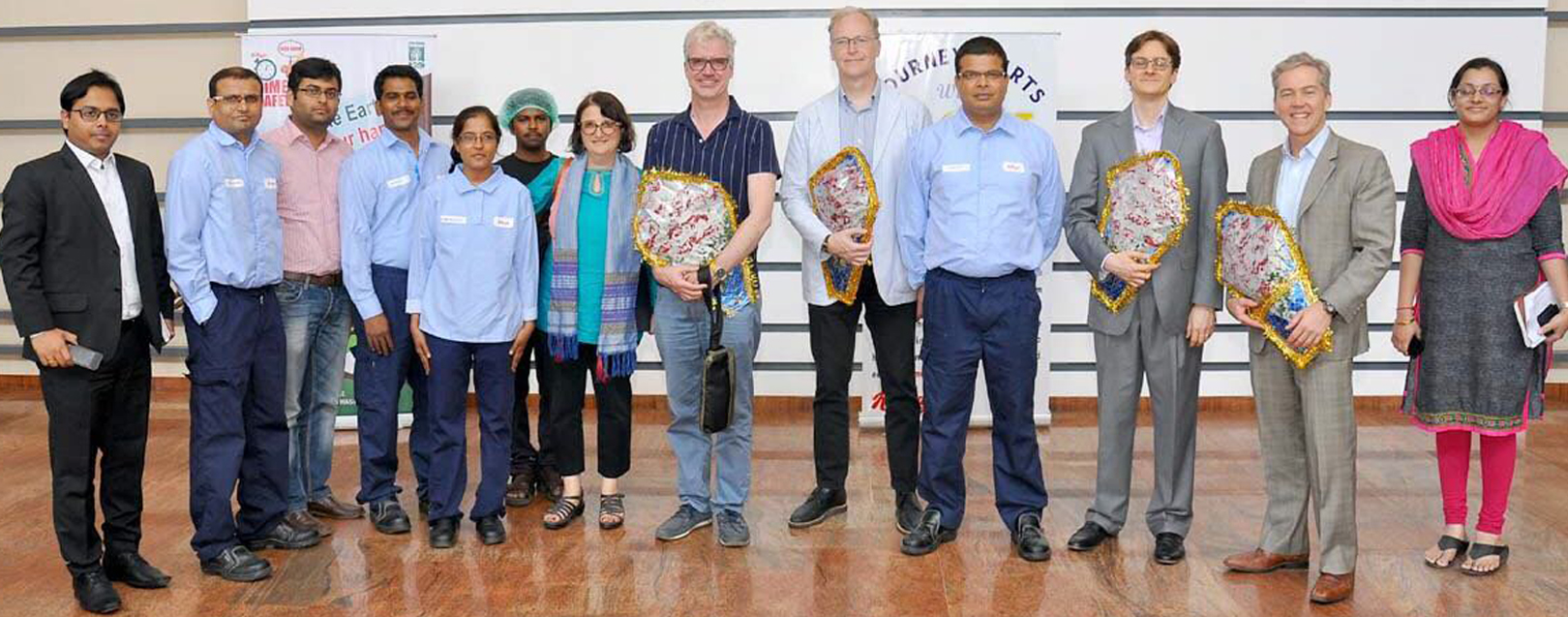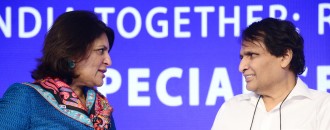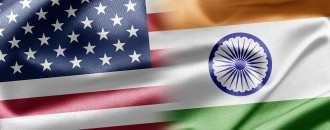
When women succeed, entire communities can be uplifted: Katherine B. Hadda, US Consul General
By Ahmad Shariq Khan
Hyderabad has been chosen to be the venue for the Global Entrepreneurship Summit 2017 (28-30 November) at a time when US-India entrepreneurial bonds have been growing stronger. This is the first time that the GES will be hosted in South Asia, and the event is aimed at highlighting India’s rapidly evolving environment for innovation and entrepreneurship. In a run up to the marquee event, The Dollar Business spoke to Katherine B. Hadda, the US Consul General in Hyderabad on a wide range of topics – from the GES 2017 to strengthening Indo-US ties.
TDB: How would you define current status of US-India ties?
Katherine B. Hadda (KBH): During his recent visit to New Delhi, US Secretary of State Rex Tillerson described the United States and India as natural allies, and that’s exactly what I see on the ground, here in Hyderabad, especially in terms of our expanding trade relationship and people-to-people ties. Over 130 American companies are doing business in Hyderabad and so many of the Indians I meet here have a meaningful connection to the United States. We continue to see incredible visa demand and enthusiasm on both sides. While all of this growth seems very natural and organic, there’s even more that we can do to realise the full potential of our strategic partnership. Given India’s size and diversity, entrepreneurial spirit, and powerful democratic system, the United States sees India as a great economic partner and strategic ally in the years to come.
TDB: The Global Entrepreneurship Summit 2017 (GES 2017), is expected to be a game changer for Indian businesses. What significance does it hold for you and what are your expectations?
KBH: GES will be a marquee event that will demonstrate the breadth and scope of the US-India relationship, the commitment of both the Trump and Modi administrations towards fostering entrepreneurship and the role that our relationship can play for the benefit of people, globally. Entrepreneurs and investors from around the world are going to be in Hyderabad next week and I’m excited that they’ll get to see the dynamism and energy that I get to see every day. In the past, we’ve seen millions of dollars in investment announced by venture capital firms, individual investors, and foundations at GES summits and we hope to see similar outcomes this year.
TDB: In GES 2017, we understand about 50% of the delegates are expected to be women entrepreneurs, out of a total of about 400 entrepreneurs from India and the US. What according to you does the participant composition signify about Indo-US women-led entrepreneurial ties?
KBH: The theme of this year’s summit is “Women First, Prosperity for All,” and that’s the result of the push for women’s empowerment that we’ve seen from both the White House, especially from Ivanka Trump, and Prime Minister Modi’s administration. There’s recognition on both sides that when women succeed, entire communities can be uplifted. I’m looking forward to seeing that philosophy take centre stage this year.
TDB: What is the current level of investments between the state of Telangana and the US?
KBH: Given the sheer scope and rapid growth of the investment flows between the US and India, it’s difficult to get a precise handle on the numbers. But we can safely say that about $3-4 billion in investments has come from the United States into Telangana, specifically. On the other side, India is one of the fastest growing sources of FDI into the United States in terms of the number of projects and employment generated. I believe that the total amount of FDI from across India into the US is now more than $11 billion. Some leading companies from the states of Telangana and Andhra - including Cyient, Aurobindo and Dr Reddy’s - have grown rapidly in the United States. I am excited to see that Mahindra is moving forward with plans to open manufacturing facilities in Detroit. I believe that these two-way investments will grow, given the commitments at the national and local levels to encourage investment and entrepreneurship in both India and the United States.
TDB: What are your thoughts when it comes to India’s pro-FDI stance and improved Ease of Doing business ranking?
KBH: Based on the enthusiasm from American companies opening and expanding their operations in Hyderabad, the effects of business-friendly national and state-level policies are definitely being felt. This is something that the World Bank agrees with and has elevated India’s place in their Ease of Doing Business rankings. Today, more than 600 American companies operate in India. It’s remarkable to think that not even twenty years ago, two-way trade between our nations was less than $20 billion per year. By the end of last year, it had grown by more than 500% to an annual $115 billion. So, I think the numbers and the steps American businesses are taking to increase their footprint in India really speaks for itself.
TDB: How do you see the growing culture of startups in India? And how can both sides collaborate on mutually beneficial propositions?
KBH: I’m fortunate to be in a part of an India that has set a standard for how to facilitate and incubate a start-up culture. It seems like every day I am meeting another entrepreneur with a big idea and the structural support to make it happen. Obviously, the biggest sign of how closely aligned our two governments are on support for entrepreneurship is the Global Entrepreneurship Summit. And, my team at the Consulate and I know that the Governments of India and Telangana are committed to ensuring that we all harness the energy that GES brings even after the Summit ends, to keep the momentum going with events that promote entrepreneurship, especially for women, and highlight both the United States and India as ideal environments to grow businesses.
TDB: Science and technology, R&D and defence remain major areas of mutual collaboration between India and US. Your comments.
KBH: The sheer size and diversity of our two economies demands that we do more to realise the full potential of our commercial partnership. There are many sectors that we believe offer particularly promising opportunities for growth and synergies. One of these areas is energy. In early October, I was fortunate to witness the arrival of shipments of US crude oil to India at Paradip Port in the state of Odisha. This was the first such shipment to India since the United States stopped oil exports in 1975, and follows recent commitments to US oil purchases by Indian Oil Corporation and Bharat Petroleum. This was a significant milestone in the growing partnership between the United States and India in the oil and gas sector, and it will enable India to diversify its suppliers and bring down oil prices for businesses and consumers. Beyond energy – including fossil fuels, renewable, and nuclear energy – other sectors ripe for expanded collaboration include environmental technologies, travel and tourism, healthcare and agribusiness.
TDB: President Trump’s protectionist measures have affected the key strengths of economies around the world, including India. These sectors vary from textiles and IT to education. What are your thoughts on these concerns?
KBH: It’s important to remember that the US maintains one of the lowest average applied tariff rates in the world and is India’s number one trading partner, purchasing close to 20% of India’s total goods and services exports. President Trump’s focus on free, fair, and mutually beneficial trade aims to highlight areas in which the United States commitments to free trade and open markets have not been reciprocated by some of our trading partners. It is also worth noting that India’s nearly $30 billion-dollar trade surplus with the United States is its largest trade surplus with any country.
TDB: The latest developments in the H1-B US work visa systems suggests that it is being made a merit-based one. What are your thoughts on this and should visa seekers from India expect more changes in the near future?
KBH: There are no immediate changes to the H1-B visa programme and individuals with valid H1-B visas are free to travel to the United States. The Executive Order calls for proposals of reforms to the H1-B visa programme. We are not in a position to prejudge the outcome of the review or speculate on any future changes. This review is comprehensive and not targeted to a specific country or sector.
TDB: Can you shed light on some of the tariff and non-tariff barriers which still impede the seamless cross-border flow of services?
KBH: The United States and India are looking at working together to improve the ease of doing business and increasing bilateral trade. And services trade is incredibly important to both our nations. NASSCOM estimates that the US purchases over 60% of India’s services exports. In 2016 alone, this amounted to nearly $15 billion dollars. India has proposed a broader agreement on services trade in the WTO in Geneva, and the United States and others are looking at how we might engage in a substantive dialogue to help improve this policy space on a global level.
TDB: ‘Putting America first’, President Trump has gone all out to brand America as an ideal investment destination. What makes the US an attractive destination for Indian businesses?
KBH: We are proud that we have expanded bilateral trade to a record $115 billion, and two-way investment to $40 billion. For Indian companies, the United States offers a unified, highly-developed and prosperous consumer and business market of some 320 million people and hundreds of thousands of companies, with many more markets – and hundreds of millions more consumers – accessible from the US through free trade agreements. We have a highly-educated workforce and excellent infrastructure. Add to this, there is the advantage of low-energy costs and a predictable legal and regulatory environment. We welcome the interest and investment by Indian companies into America, which creates jobs and prosperity for both our countries.






 to success.
to success.